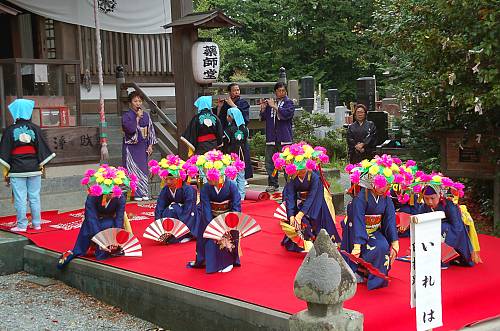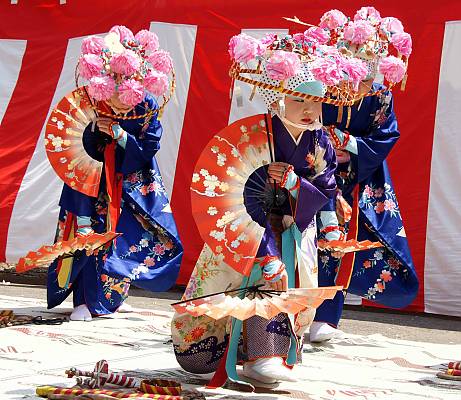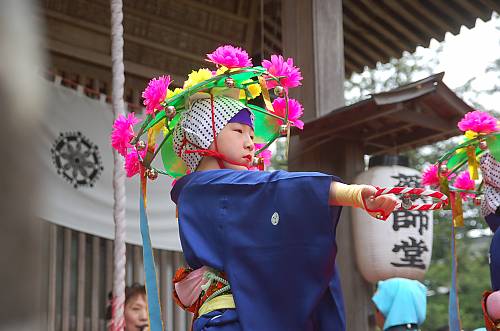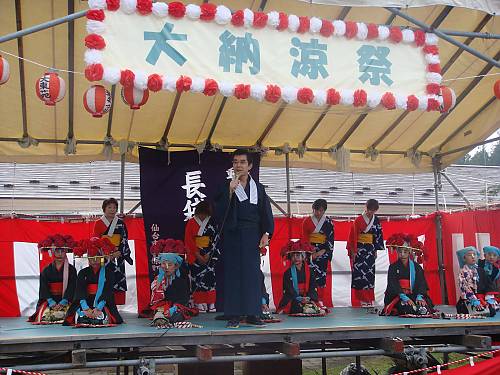Akiu no Taue Odori
Inscribed in 2009 (4.COM) on the Representative List of the Intangible Cultural Heritage of Humanity

In the Akiu no Taue Odori, residents of the town of Akiu in northern Japan pray for a good harvest by simulating in dance the actions involved in transplanting rice. Performed since the end of the seventeenth century in communities throughout the region, the Akiu no Taue Odori today takes place during festivals in the spring or autumn. Ten female dancers dressed in colourful kimonos and floral headdresses, assisted by two to four male dancers, perform a repertoire of six to ten dances. Holding fans or bells, the women align themselves in one or two rows and perform movements designed to evoke the gestures of the rice cycle, particularly taue, the transplantation of seedlings into a large rice field filled with water. Once believed to ensure an abundant crop, the performances have lost their religious significance as attitudes and beliefs have changed, and as modern agricultural techniques have replaced rituals such as the Akiu no Taue Odori as guarantors of plenty. Today, the dance is a cultural and aesthetic event, connecting townspeople to their agricultural heritage, to Japan’s tradition of reliance on rice, and to a group identity transmitted across centuries through folk performance.









